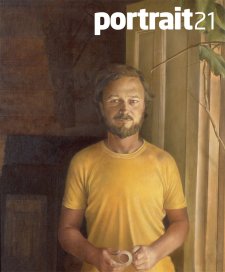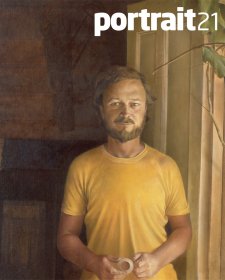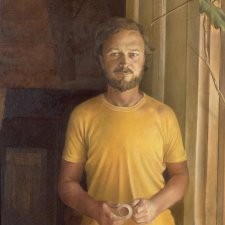The theme of the National Portrait Gallery’s 2006 annual survey of secondary school student portraiture is Me and My Place. This is the seventh exhibition of the Headspace project, and calls upon students to consider where they are - on a number of levels.
The theme of the National Portrait Gallery’s 2006 annual survey of secondary school student portraiture is Me and My Place. This is the seventh exhibition of the Headspace project, and calls upon students to consider where they are - on a number of levels. Through their work in a myriad of mediums, this year students have explored the exhibition theme broadly. Students analysed their conceptions of self in combination with an exploration of how they are shaped and defined by place. By asking the students to look beyond themselves, this year’s exhibition differs markedly from past Headspace outings - such as Facing Memory (2003), and Who Am I? (2005) - exhibitions in which the majority of works were, quite rightly, introspective. The works in this year’s show run the gamut of the possibilities the word ‘place’
offers, from analyses of the place inside one’s head, the physical places in which one spends time, the places one likes to be, to the world, the environment, one hopes for in the future. An interesting current that runs through Headspace 7 is the students’ keenness to show in their self-portraits who is (and in some cases who isn’t) in that place with them, whether it be friends, family or imaginary beings. This is in keeping with the broader public discussion of concepts of identity, notions of belonging - in society, in a community and to land or country. All of these issues have been addressed by the students in Headspace 7 in thoughtful and original ways. Underpinning the Headspace project is the belief that portraiture is a valuable, potent, and pertinent art form through which secondary students can explore aspects of themselves, their communities, and the world as it is - or might be. Art has much to teach us about the world and our place in it. The Headspace project gives young artists the chance to reflect on their work, to see their progress, and to be stimulated by the work of other students to develop in new ways.
Professor Anne Bamford recommends in her groundbreaking work on the global impact of the arts in education, The Wow Factor (2006) that art as an exhibition-based medium remains an important aspect of an art education program. For complete development in art education, students need opportunities to exhibit their work. Exhibitions allow the work of teachers and children to be publicly highlighted and appreciated. This is of particular benefit in raising the confidence and self-esteem of the children
involved. The works submitted for Headspace 7 demonstrate that the theme of place is highly apt to the genre of self portraiture. By being expansive in their self-imaging the students exhibited in the show truly deserve their ‘place’ on the walls and in the showcases of the National Portrait Gallery.















